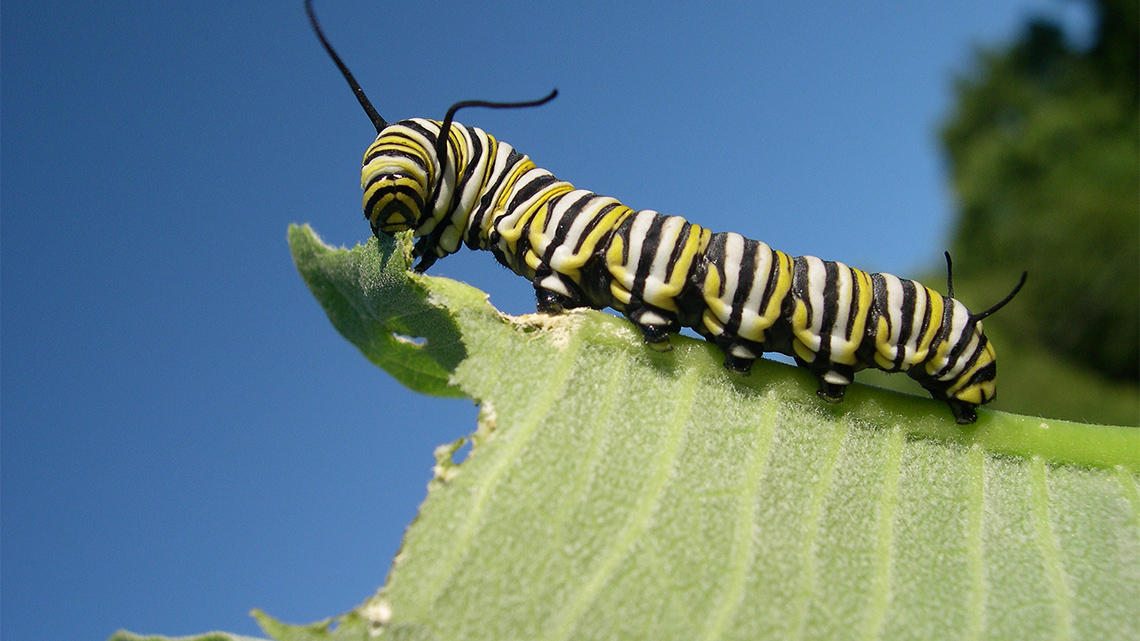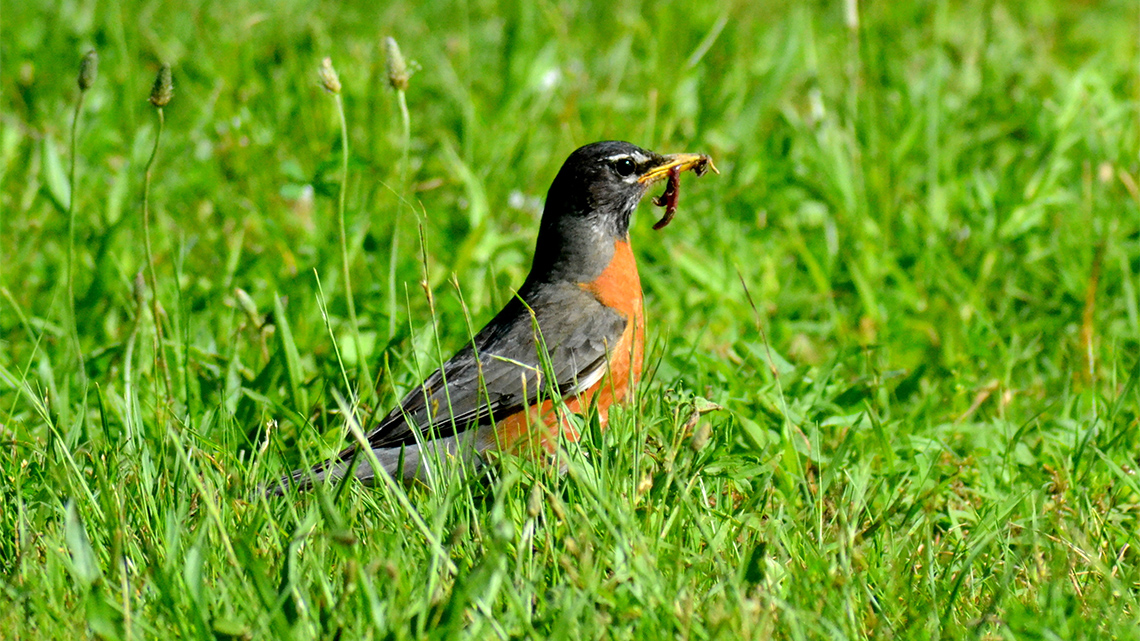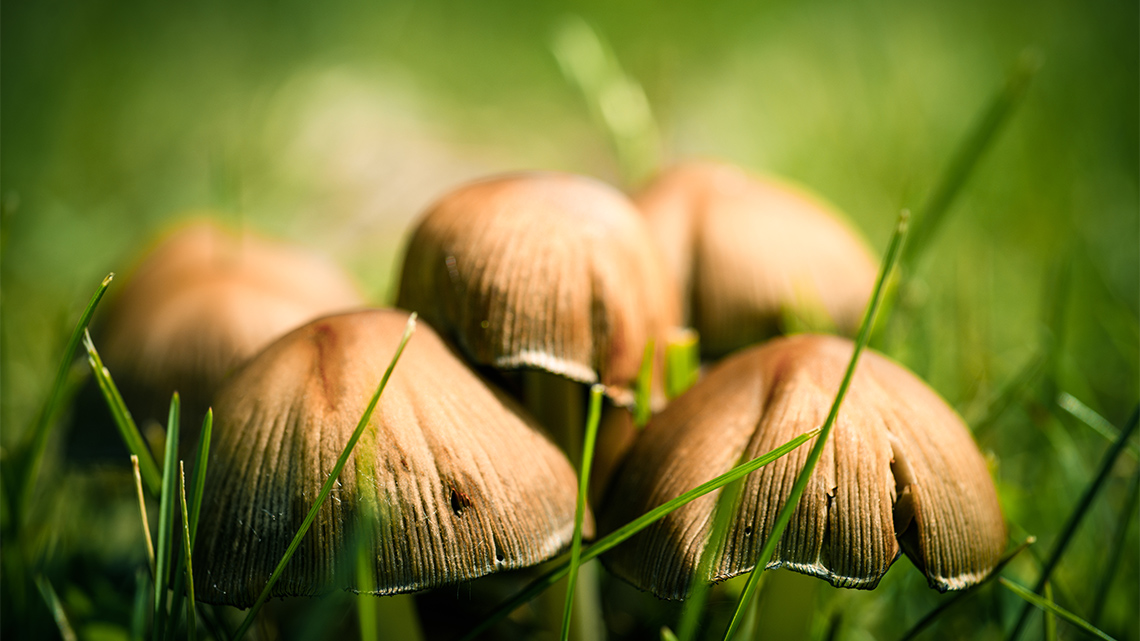Minds On
Eric explores!

Eric explores a yard to gather examples of all of the living things he has found.
Explore this video to discover how Eric organizes living things into two categories, plants and animals.
Sorting it out!
Let’s sort the items Eric found in the hula-hoop into plants and animals!
Action
Let’s investigate
Learning about the world around us can help us take steps to care about and protect other species.
Plants, animals and people are all living things. Living things need:
- food
- air
- water
Explore these images. What living things do you notice in the images?
Press ‘Living Things’ for a list of what can be found in the photos.
- ant on a leaf
- purple clover flower
- monarch caterpillar eating milkweed leaves
- robin eating worm in grass
- mushrooms in the grass
Plant or animal?
How do you decide if something is a plant or an animal? Discuss with a partner if possible!
Press ‘Plant or Animal?’ to explore a few ways you can tell the two apart.
- Animals can move around, while plants cannot.
- Plants can use sunlight to make food, while animals need to find their own food.
Did You Know?
And mushrooms…?
Did you know that mushrooms are definitely not animals, but they are not plants either? They are called fungi.
Big and little helpers

Plants and animals help each other every day.
Some plants might provide food for the animals, or the small animals might be food for other animals. The biggest helper of all is… the Sun.
Without the Sun, there would be no energy for the plants to grow.
That would mean no food energy for the small insects, which would mean no food energy for larger animals.
How else does the Sun help living things?
Press ‘Sun’ to check your answer
The Sun gives us warmth and light. All living things need both of these to be healthy.
The food chain always starts with the Sun.
Check out the following food chain that could take place in an Ontario backyard. A food chain shows what living things need each other to be healthy.

Pause and Reflect
Living things need each other
Living things are important to each other.
Think about this question with a partner, if possible!
- What do you think would happen to this food chain if the plant was not there? What if there were no insects?
I can make a difference
This learning activity connects new and existing approaches for young scientists to create positive changes in their communities.

If we can name the living things in our community we can learn more about them and how they help each other.
We can use this information to teach others!
Did you know that there is technology that can help us name the plants and animals we notice in the environment around us?
This technology can share the name of a living thing based on their parts.
Computers have learned how to identify living things from lots of practice looking at pictures shared by adults and children.
You can search other people’s pictures to explore what they’ve found in the area before you go exploring.
Why can it help you to know the name of plants and animals in your community?
Consolidation
All things are connected

Plants and animals need each other to be healthy.
How do living things help each other?
Remember that all of these living and non-living things are connected.
What would happen if one of these living things were not there?
Why would it be good to know the names of each of these living things if they were in your community?
Record your answers on the computer, on paper, or share with a partner, if possible.
Reflection
How do you feel about what you have learned in this activity? Which of the next four sentences best matches how you are feeling about your learning? Press the button that is beside this sentence.
I feel…
Now, record your ideas about your feelings using a voice recorder, speech-to-text, or writing tool.
Press ‘Discover More’ to extend your skills.
Discover MoreA field guide is a book or digital tool that teaches people about what they might find outdoors when they are exploring.
Sharing your findings, whether in an app or another format, lets you be a teacher for others in your community.
Checklist
When I conduct an investigation…
The next time you are outdoors with an adult, use a piece of string or a hula hoop to mark an area to investigate. Create your own list of plants and animals using pictures, drawings, words, or an audio recording.
For an extra challenge…
Using photos or drawings, create a labelled field guide to explain what you’ve found. This is something you can keep adding to after other investigations.




